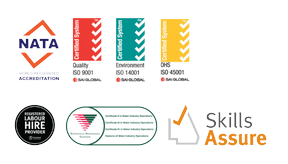Is your plant ready for ANOTHER very wet Summer?
The Australian climate has always presented substantial challenges to water and wastewater industry operators.
Our weather events can be quite extreme as we have seen with two consecutive La Nina weather events causing mass flooding along the east coast of Australia and a strong prediction for a third in 2022-2023. Successful management of water and wastewater throughout these weather events is challenging and requires preparation and planning.
In addition to managing pond volumes and irrigation (if that is your means of effluent dispersal), other issues to be managed can include:
- Tightening networks to reduce the amount of incidental or infiltration flow that might get into a wastewater plant.
- Ensuring raw water intake is in good condition and well-screened so that all the trash that turns up in a wet weather event can be successfully managed.
- Having plenty of chemicals on hand to be able to treat dirty water as enters a water plant.
- Getting ahead of sludge balancing to make sure there is plenty of room for the extra sludge that will be the result of an event. (You have to be ready to fortify your sludge to make sure it’s heavy because as the extra flow comes in there is a heightened risk of sludge being flushed out.
- Flushing your sand filters to make sure they are in the best condition because they are going to get hit with a lot more solids because of dirty water coming through with the flooding.
- Trying to reduce infiltration of sewage into the sewer.
In this article we will deal specifically with wastewater and sewage plant preparation. In a subsequent article we will address the issues surrounding the management of potable water during wet weather events.
If you haven’t already prepared along the lines of suggestions made in this article, it’s time to get moving!
The calm before the storm
So, what’s the best way to build a contingency plan to deal with an extreme wet weather event?
The first thing you need to do is understand your Environmental Authority (EA) licence conditions for your wastewater and sewage treatment infrastructure. You can click here to test your EA knowledge and receive a step through prepared by our Tech Services Team.
From here, you will find critical information, such as:
- Whether or not your site-based management plan (SBMP) exists and is up to date?
- If you have an up-to-date SBMP has a contingency plan been documented?
- If you have a SBMP and a contingency plan have they been reviewed and updated since the last extreme weather event?
- If all the above details are complete and up to date, has your operations team read and understood their responsibilities?
The sooner a storm is anticipated, the sooner it can be prepared for. Simmonds & Bristow have prepared some checklists to get you thinking:
These, and the following points offer an important starting point, but you may find a quick chat with a member of our team invaluable. If you call us on 1800 620 690 and ask for a member of our technical or operations teams, we’ll be able to you through what needs to be done based on your specific needs.
- Critical Spares. Have you got a good supply of sample bottles on hand? Click here for our Critical Spares audit checklist.
- Storage volumes should be reduced to a minimum by irrigating the maximum allowable volume (assuming the weather is still fine).
- Ensure you adhere to all licence conditions, including for water quality and surface ponding. In some cases, a vacuum truck might be the best option for taking effluent off-site if access permits.
- Any irrigation management plans should be referenced, and a suitable plan if not already documented can be made for the specific event.
- If there’s a chance that an incidental release might occur, it goes without saying that your management staff should be notified.
- A temporary emissions licence (TEL) can be sought from the Department of Environment and Heritage Protection (DEHP). The TEL can provide an allowance to irrigate during extreme wet weather events (possibly to an alternate release point), which can be crucial to saving plant infrastructure such as earthen dams and ponds from reaching capacity and potentially over topping.
- Pumps and valves should be checked and determined to be problem-free before rainfall lands. This would also include spare pumps as these may need to be deployed to control an unauthorised release as well as being prudent backup.
- Infiltration to sewers – fix pipes damaged by roots, any manholes that have been cracked or damaged might need to be replaced.
The wet weather is coming
During a wet weather event, there’s usually a short timeframe to make key decisions on how to prevent or minimise environmental harm. This is the general environmental duty of any operator, and they must keep this in mind. Proper planning before the storm will assist in decision-making to avoid or minimise harm.
To avoid or minimise environmental harm and unauthorised releases of effluent, proactive planning and decision-making should consider:
- The safety of on-site personnel and downstream neighbours as well as livestock;
- Risk of pond failure if overflowing occurs (i.e. releasing the full pond volume; typically, the licence will require a minimum freeboard to prevent pond instability);
- Where the effluent could ultimately end up (e.g. unused land on site, neighbouring lot, creek system).
If you don’t prepare for extreme wet weather events this summer, these factors will have to be considered on the fly; a situation that should be avoided at all costs.
Review last year’s observations
A detailed assessment is necessary to evaluate the impact of the event and any unauthorised releases. Raw sewage and rainfall flows should be quantified or estimated, in addition to the volume of water released. This information can be calculated based on flow meter figures, pump durations and flow rates, and this will aid you in determining the dilution of the sewage released.
Water quality results from samples taken during the event will also shed light on the impact of the release.
It is also necessary to discuss the actions taken on site (and actions that could have been taken on-site) to minimise environmental harm. Remedial actions might be recommended from the detailed assessment to prevent an unauthorised release from occurring again in the future.
Plant upgrades, remedial works, upgrading management plans should be explored before in the lead-up to predicted weather events.
In a worst-case scenario, taking the time to show you have invested in being prepared will demonstrate a proactive attitude to preventing environmental harm, meaning that the Department of Environment is more likely to act to support, rather than penalise.
Things to remember
During extreme weather events it’s necessary to record as much detail as possible about the event to permit post-event evaluation and assessment, and this should include not only what has happened, but what could have happened. If your site doesn’t have sufficient data from last summer please consider the following:
- Details to record should include rain gauge and flow meter readings and observations.
- You can never take too many photographs in these instances.
- Carrying out on-site testing and taking water quality samples of the release and the necessary environment (creek/stormwater/lake, upstream and downstream of the release) during the storm is crucial, to help you stay on top of water condition.
- Water quality samples should be taken upstream and downstream of the release point and at the release point itself, in the natural stream (creek, lake, or river, if applicable), and surface runoff from the release point.
The EP Act (Section 320) provides for strict timelines for reporting, which, in some circumstances allow 72 hours for notification.
However, as a general rule the DEHP state that they must be notified of any environmental harm (or potential environmental harm) at the time of the event and within 24 hours of the event taking place. Navigating legislative requirements and meeting preferred departmental timelines can be very confusing.
Based on your site and your command structure, your time to report may vary, and could range 24 to 72 hours. That makes this a great area to seek expert advice on (before you find yourself in this situation!).
Why go to all of this trouble?
Fixing potential issues before they become confirmed problems means spending your dollars improving your business – not paying fines or getting on the wrong side of the department which can jeopardise your business.
Whether you are starting a contingency plan from scratch or you would like us to use our specialised tools and equipment to test your existing contingency plan and make sure it works, Simmonds & Bristow can tailor our services to meet your needs.
If you need help getting your water and wastewater plant ready for a 3rd La Nina Summer, Simmonds & Bristow are here for you.
Read how we helped one of our clients when they were caught out during the last La Nina event in early 2022…read more.






